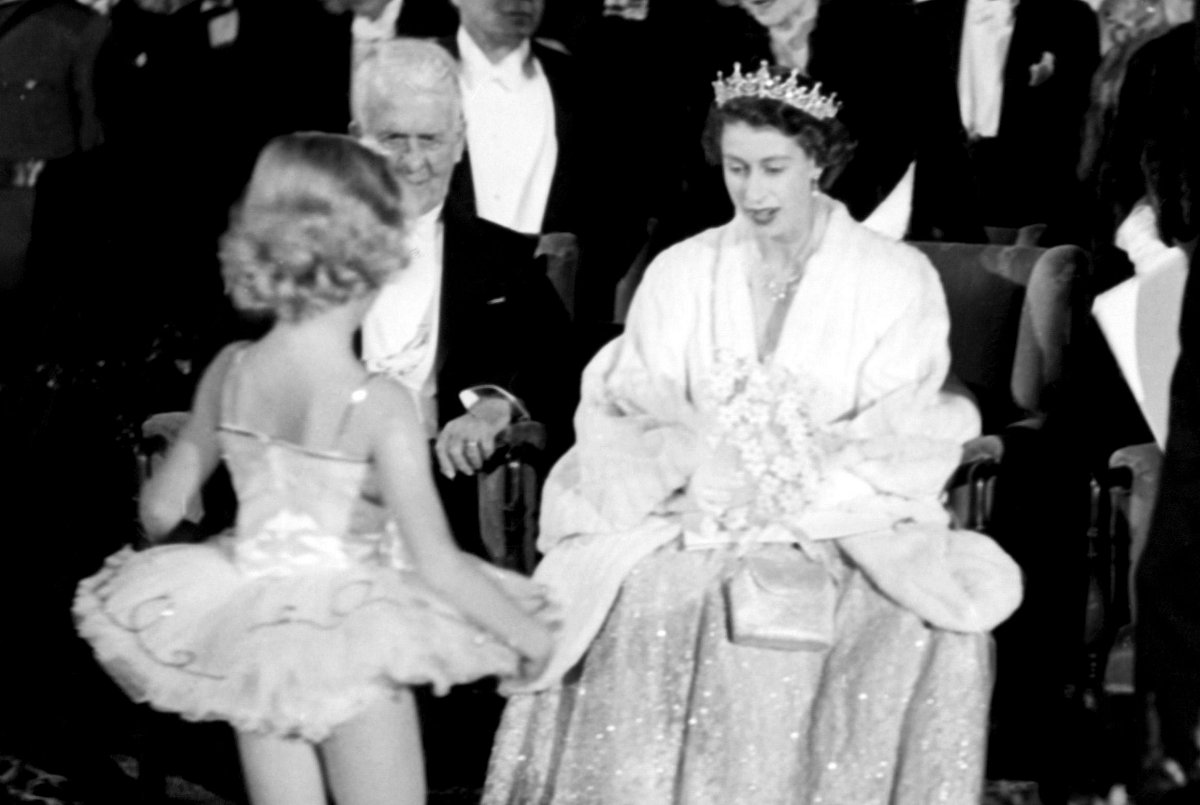
Happy Canada Day, magpies! We’re celebrating Canada’s national day with a look back at a glittering tiara appearance from one of its former heads of state, the late Queen Elizabeth II. In 1951, when she was still a princess, Elizabeth had a memorable night in sparkling diamonds at the Winnipeg Ballet.
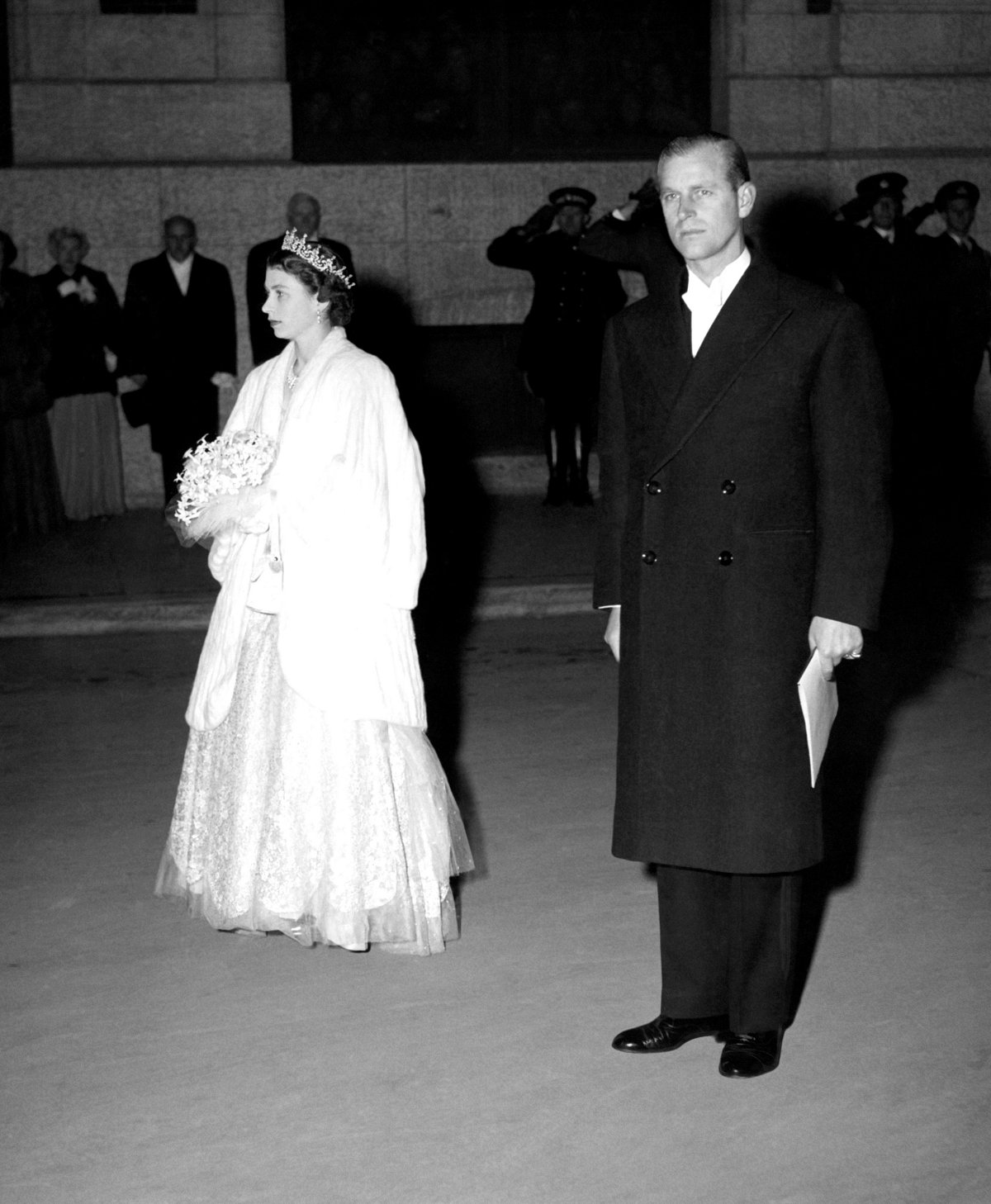
On October 16, 1951, Princess Elizabeth and the Duke of Edinburgh arrived at the Civic Auditorium in Winnipeg for a special performance by the dancers of Canada’s oldest ballet company. During the command performance, two original Canadian ballets, Visages and Ballet Premiere, were on the program. The evening’s principal dancers were Jean Stoneham Orr, Arnold Spohr, and Lillian Lewis, with Eric Wilde conducting the orchestra.
The performance was the final event on a whirlwind day. Jack Karr, special correspondent for the Toronto Star, wrote, “The Winnipeg welcome was a wallop. It was big and exuberant, good natured and open-hearted, much like the prairie city itself. It started off quietly enough, but once Winnipeggers shifted into high gear, they had themselves a ball.” With casual regard for protocol, the local people gave the royal couple a truly enthusiastic reception throughout the day, and the late hour of the ballet performance–10:30 PM–proved that they had plenty of stamina as well.
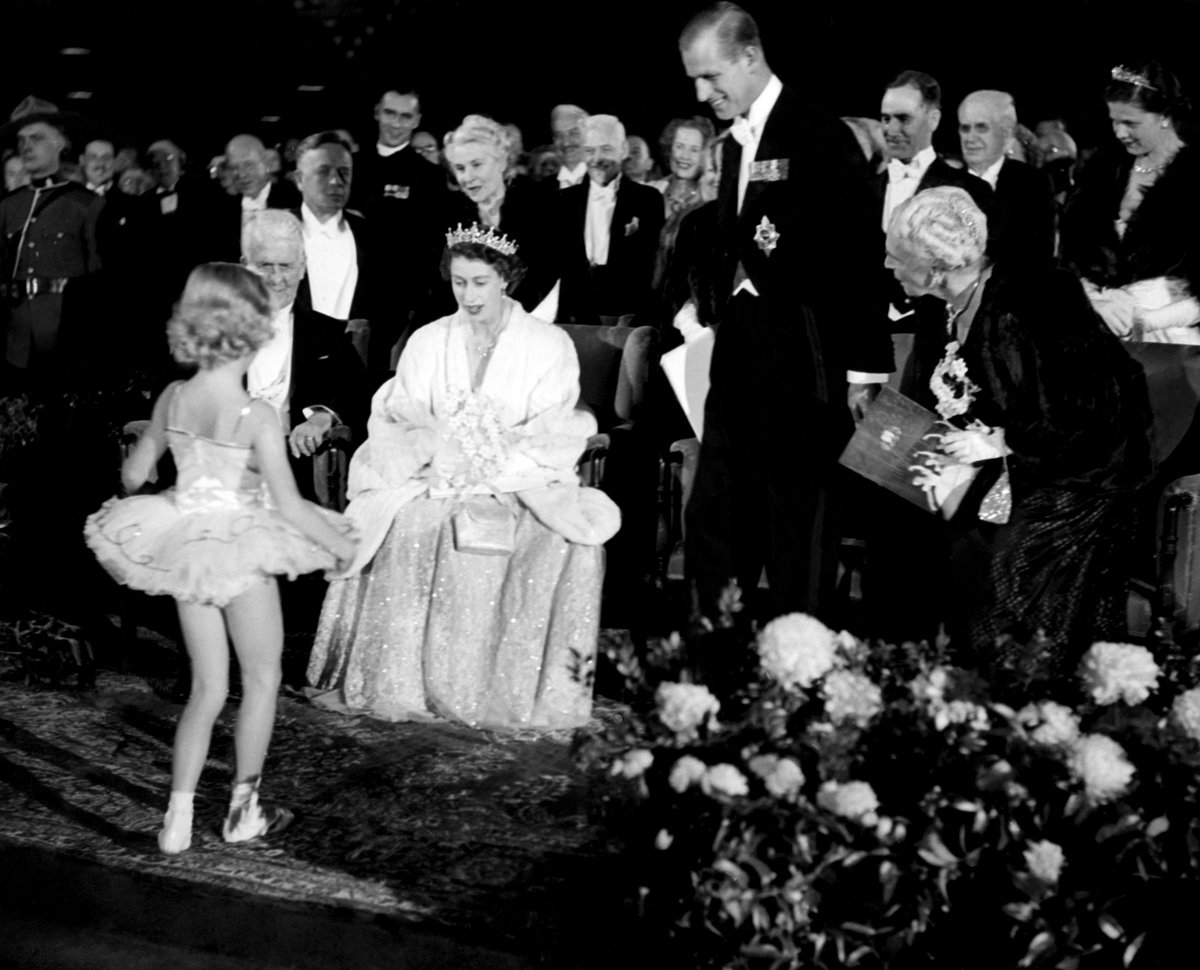
The royal couple arrived in an auditorium so filled with flowers that reporters compared it to a sunken garden. A little dancer, Marilyn Adams, also presented the princess with a special bouquet on her arrival. The bouquet, made of sweetheart roses and stephanotis, was surrounded with tulle, so that it looked a bit like a ballet dancer itself.
The auditorium was also uncommonly bright for the occasion, lit with special lights arranged by the National Film Board, who were recording the event on film cameras. Joining the couple in the royal box were the Lieutenant Governor of Manitoba, Roland Fairbairn McWilliams, and his wife, Margaret. Four thousand people in the audience applauded as the couple took their seats.
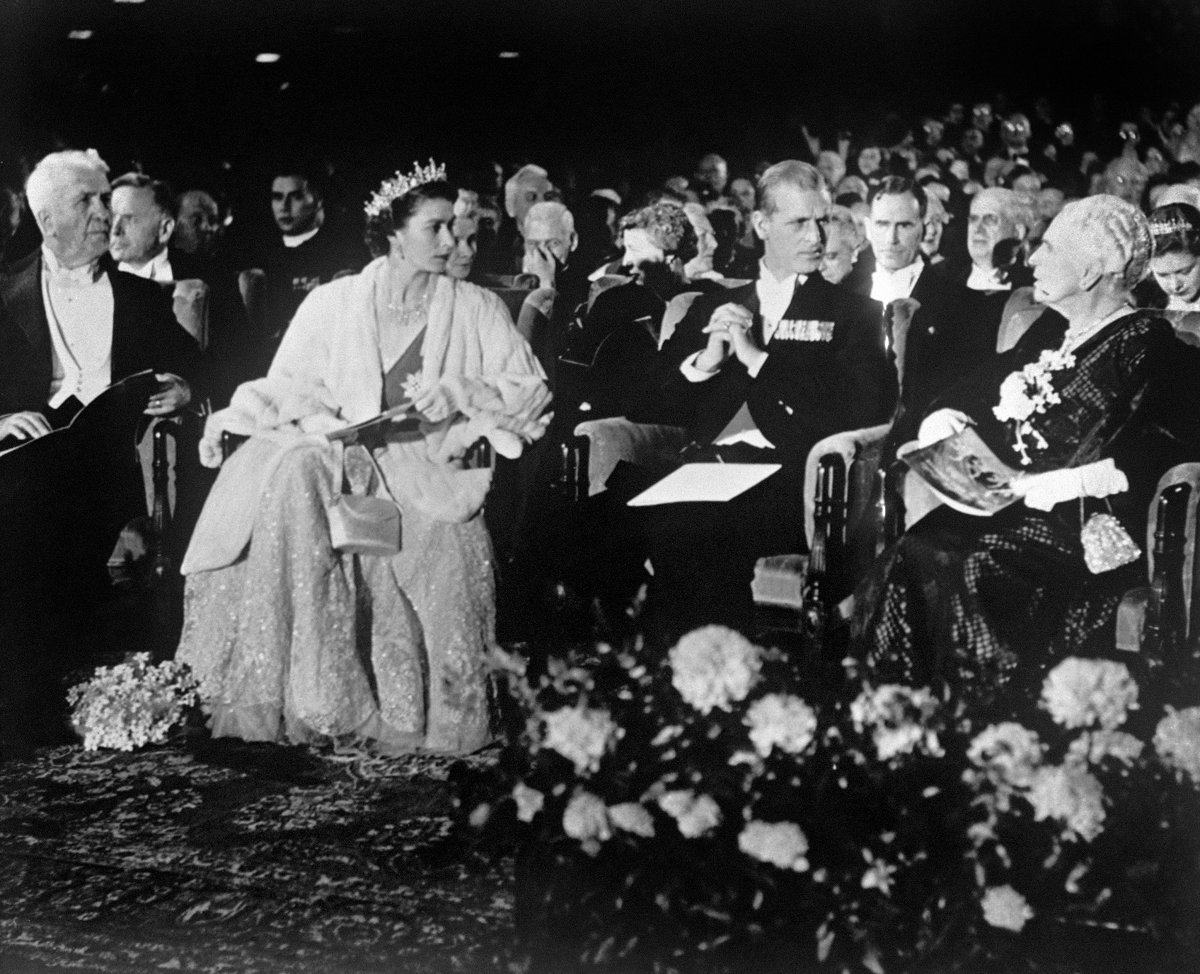
Kerr wrote that the exuberance of the local residents didn’t wane inside the auditorium. “Some of them had come to the show dressed to the teeth, but that didn’t stop some ladies in evening gowns from climbing on to their chairs and looking down on the royal box through their opera glasses,” he wrote. “During intermission, this big, friendly audience, perhaps forgetting that they were not dealing with a movie star or a channel swimmer, broke into applause from time to time, trying to wheedle her into getting up and taking a bow. Elizabeth, who had never been confronted by a situation like this before, did what she could. She became very intent in conversation with her husband and the lieutenant-governor.”
After the performance, Elizabeth and Philip went backstage to thank the dancers and the rest of the artists who had made the evening possible. Gweneth Lloyd, the co-founder and director of the ballet company, told members of the press that the princess had personally congratulated her and expressed admiration for the talent of the dancers and musicians. Lloyd told reporters that she “found the princess quite shy,” adding, “I did most of the talking.” Jean Stoneham recalled that Elizabeth told her, “You dance beautifully.”
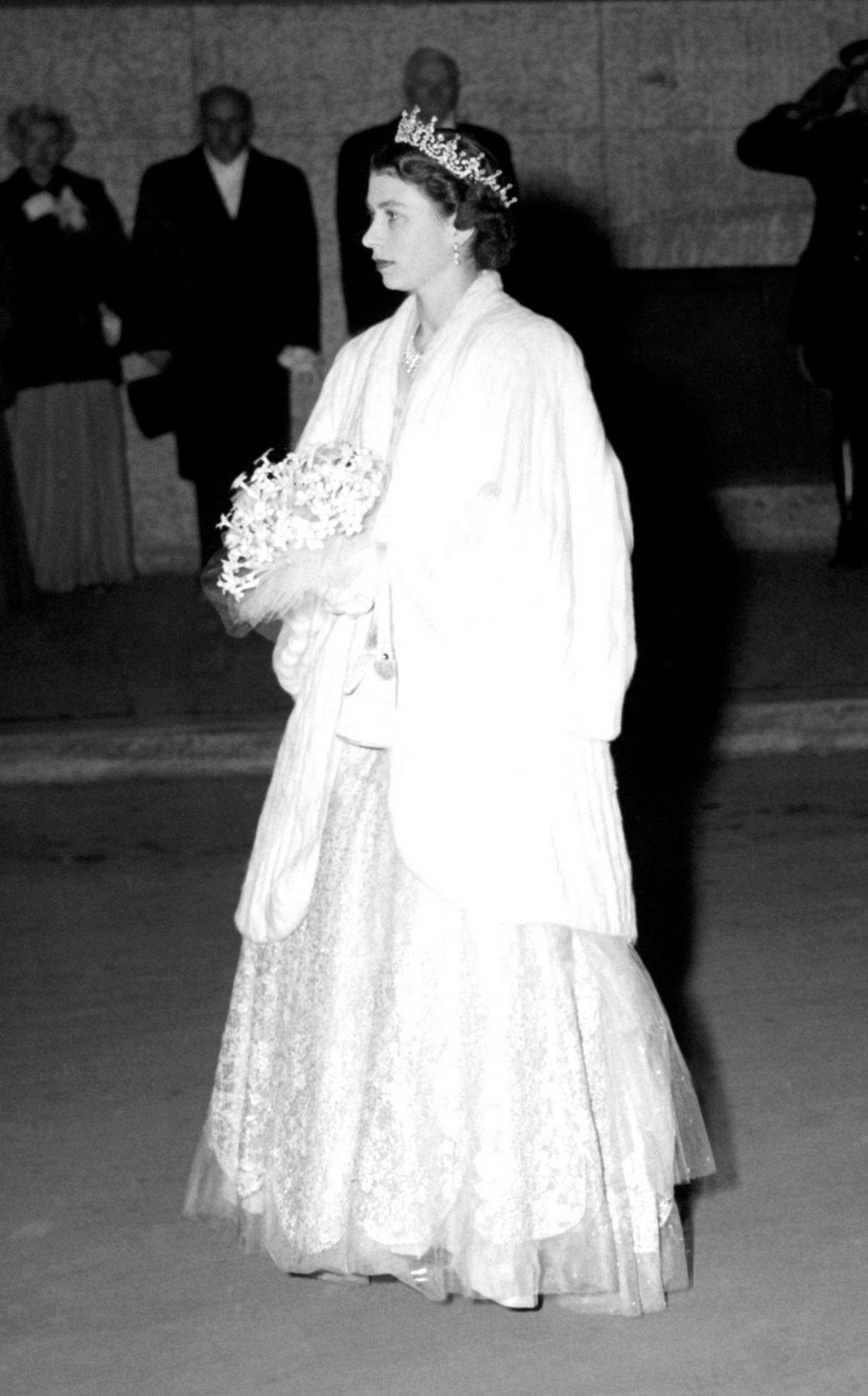
The future Queen Elizabeth II always keenly understood that people expected her to embody a certain image of royal glamour, and she carried that role off beautifully for her night at the ballet in Winnipeg. She wore sparkling diamonds and luminous pearls with a gown described by the Montreal Star as “a pale yellow picture dress with diamantes” with a matching tulle wrap. She added extra warmth with a white ermine wrap and white gloves on the chilly Canadian evening.
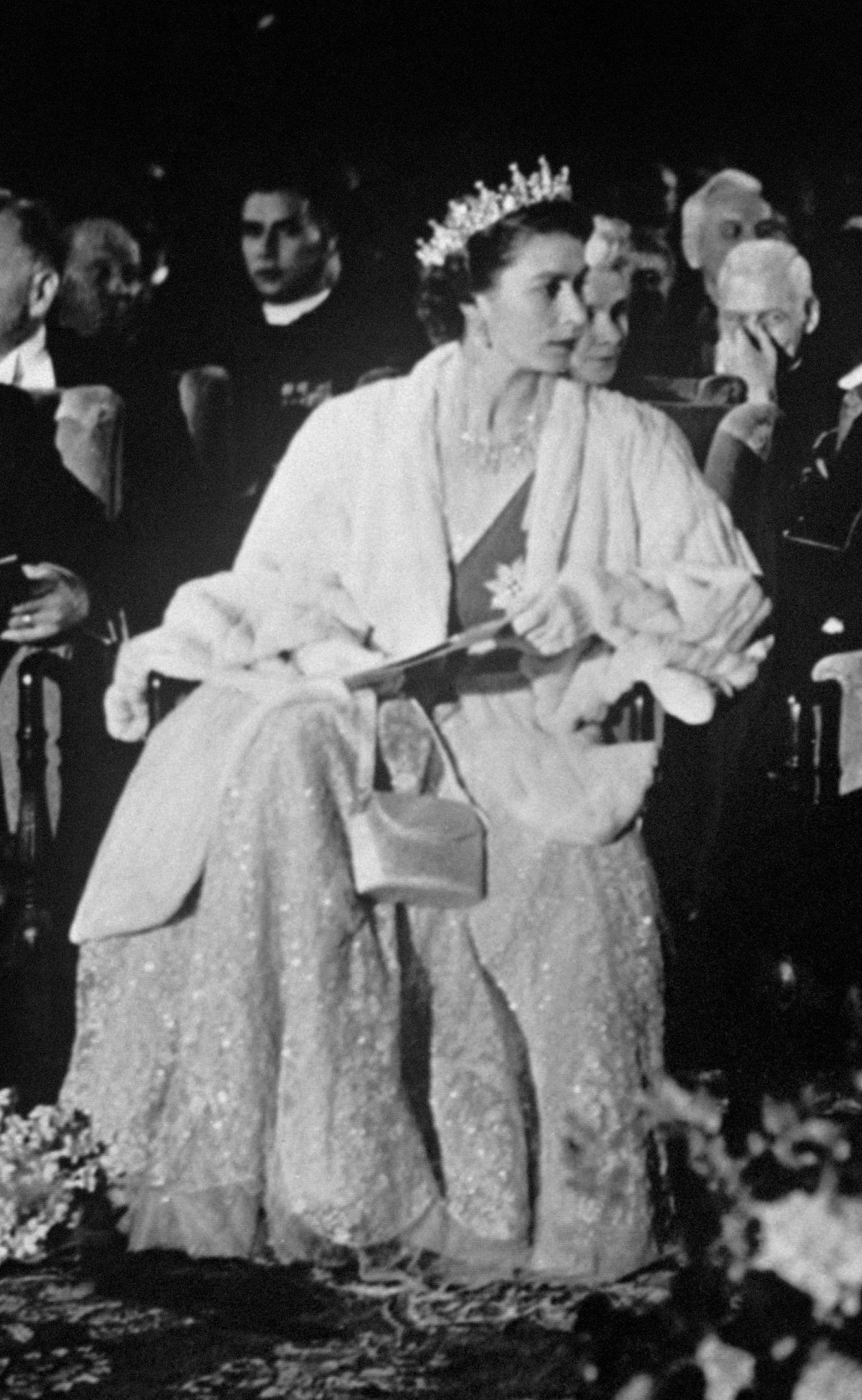
The dress sparkled almost as brightly under the film lights as the diamonds did. With the gown, Elizabeth wore the kingfisher blue sash of the Order of the Garter, affixing the order’s diamond star so that it rested partly on the sash itself.
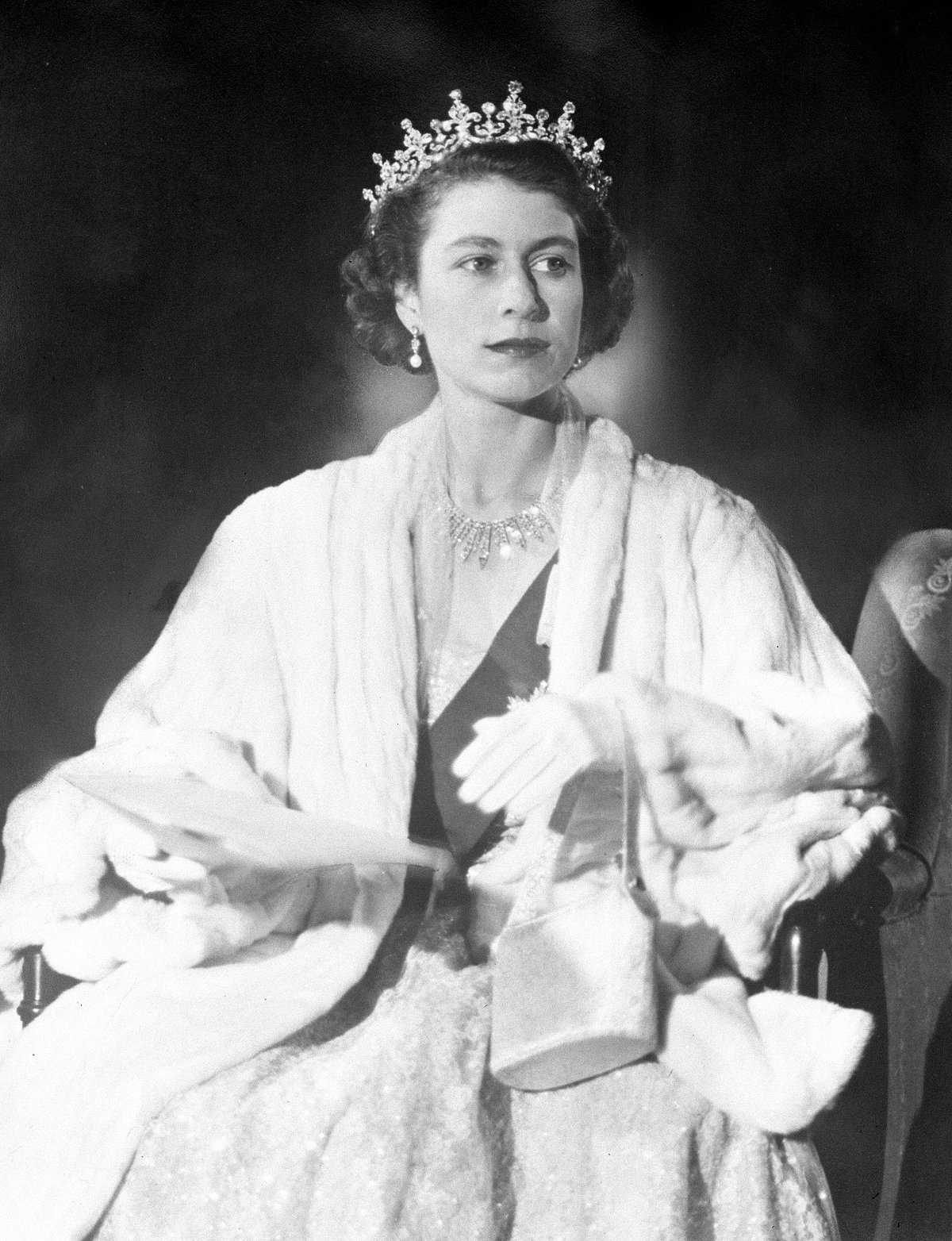
The jeweled accessories that Elizabeth added to her ensemble that evening were all gifts received during her royal wedding celebrations in the autumn of 1947. Her tiara, the Girls of Great Britain & Ireland Tiara, was a wedding gift from her grandmother, Queen Mary. The jewel had been made as one of Mary’s own wedding gifts in 1893, and over time, the original base of the piece had been removed so that it could be worn separately as a bandeau. At this point, Elizabeth had not yet reunited the tiara with its base. In the bandeau-less setting, the festoon and fleur-de-lis tiara sat snugly against the princess’s head.
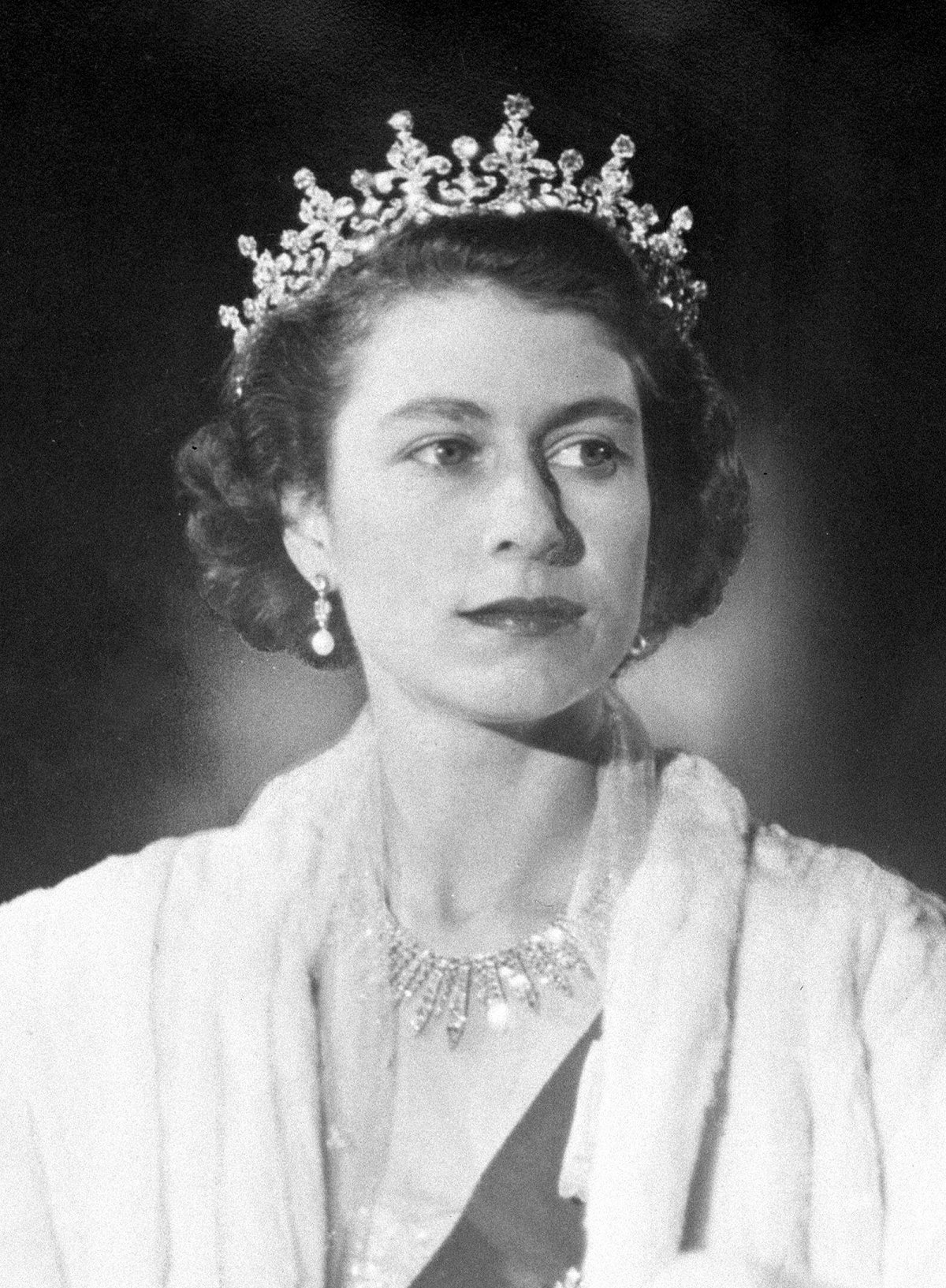
Elizabeth also wore the dazzling diamond fringe necklace that she had received as a wedding present from a number of important financial figures from the City of London. The antique nineteenth-century necklace is threaded on silk, which means that, unlike many diamond fringes, it cannot be worn as a tiara.
The royal look for the ballet was completed by a pair of newly-made earrings. Elizabeth received a collection of seven pearls from the Hakim of Bahrain as a wedding present, neatly arranged on a shell. She had two of these round pearls set as drops on a pair of earrings featuring round and baguette diamonds.
Delightfully, that film footage of the Winnipeg visit that I mentioned above still exists today, and it’s available to stream online! CBC Manitoba has uploaded the film to YouTube, and you can see Elizabeth and Philip sparkling in color at the ballet starting about a minute into the video. The film even includes glimpses of the ballet performance itself!
Leave a Reply
You must be logged in to post a comment.